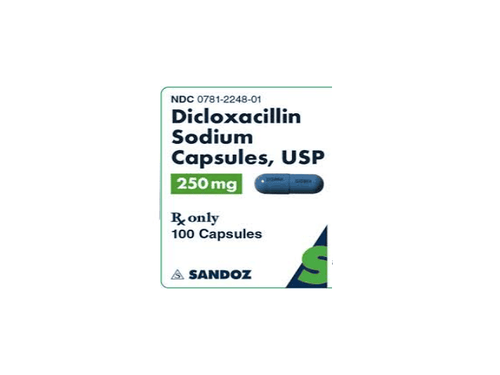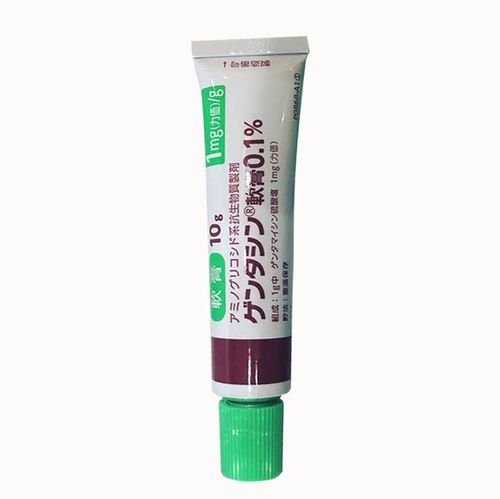This is an automatically translated article.
Agoflox 200mg is a medicine used to treat bacterial infections, severe bronchitis, pneumonia. Agoflox is also used to treat bacterial skin and soft tissue infections, colitis caused by bacteria.
1. Uses of Agoflox 200mg
What is Agoflox? Agoflox 200mg is a fluoroquinolone antibiotic similar to ciprofloxacin, but oral ofloxacine has a bioavailability greater than 95%. Ofloxacin has a broad spectrum of antibacterial activity including Enterobacteriaceae, Pseudomonas aeruginosa, Haemophilus influenzae, Neisseria spp., Staphylococcus, Streptococcus pneumoniae and a few other gram-positive bacteria. Ofloxacin is more active than ciprofloxacin against Chlamydia trachomatis, Ureaplasma urealyticum, Mycoplasma pneumoniae. It is also active against Mycobacterium leprae and also Mycobacterium spp. other. Ofloxacin has a bactericidal effect. The mechanism of action is not fully known. Like other antibacterial quinolones, ofloxacin inhibits DNA-gyrase, an enzyme required in bacterial DNA replication, transcription, and repair.
2. Indications to use Agoflox 200mg
Ofloxacine is indicated for the treatment of the following infections:
Complicated and uncomplicated urinary tract infections. Skin and soft tissue infections. Prostatitis . Sexually transmitted diseases such as: uncomplicated acute gonococcal infection of the urethra and cervix, and non-gonococcal urethritis and cervicitis. Pneumonia caused by H. influenza or Streptococcus pneumoniae. Chronic bronchitis exacerbation. Eye drops form:
Infections of the outer part of the eye (conjunctivitis, keratitis) or adnexal parts (blepharitis, lacrimal sac) caused by strains of bacteria sensitive to ofloxacin.
3. Dosage - how to take Agoflox 200mg
Oral form
Adults :
Urinary tract infections:
E. coli or K. pneumoniae cystitis: 200mg every 12 hours for 3 days. Cystitis due to other bacterial infections: 200mg every 12 hours for 7 days. Complicated urinary tract infections: 200mg every 12 hours for 10 days. Mild or moderate skin and soft tissue infections: 400mg every 12 hours for 10 days. Acute exacerbation of chronic bronchitis or pneumonia: 400mg every 12 hours for 10 days. Sexually transmitted diseases:
Uncomplicated gonococcal infections: 400mg a single dose. Urethritis or cervicitis caused by C. trachomatis: 300mg every 12 hours for 7 days. Prostatitis: 300mg every 12 hours for 6 days. Dosage adjustment in patients with renal impairment When only plasma creatinine concentration is known, the following formula can be applied to estimate creatinine clearance:
Male: Creatinine clearance ml/min = Weight (kg) x (140-Age)/72 x Plasma Creatinine (mg/dl) Female: 0.85 x Value calculated for men Injection form: Intravenous infusion over 30 minutes.
Adults: 400mg/24 hours, divided into two infusions. Severe cases: 400mg every 12 hours. Form of eye drops :
Dosage depends on the degree of infection and is decided by the eye specialist.
4. Contraindications to the use of Agoflox
Ofloxacin is contraindicated in patients sensitive to ofloxacin or any quinolone derivative.
5. Notes when using Agoflox
The potential benefits and risks should be carefully considered when using ofloxacin in cases of central nervous system disease including epilepsy and cerebral arteriosclerosis.
Photosensitive reactions have been seen in some patients receiving fluoroquinolones. Exposure to sunlight should be avoided. If photosensitivity reactions occur, the drug should be discontinued. Patients with impaired renal function require a change in treatment regimen.
Recommendations:
The safety and effectiveness of ofloxacin in children, growing children (children under 18 years), pregnant and lactating women are not known. As with other quinolones, ofloxacin may stimulate the central nervous system causing tremors, restlessness, lightheadedness, confusion, and hallucinations. If these symptoms occur, the drug should be discontinued and appropriate treatment instituted.
When there are signs of tendon pain, fluoroquinolone antibiotics should be stopped immediately.
Cross-sensitivity:
Patients with a known hypersensitivity to a fluoroquinolone or to quinolone derivatives with a similar chemical structure may also be susceptible to ofloxacin.
Pediatric use:
Fluoroquinolone is not recommended in children and infants.
Elderly:
Studies have been performed that do not have specific complications in the elderly that limit the use of fluoroquinolones in this population. However, in the elderly, there is often a decline in renal function with age, so it is necessary to adjust the dose when using fluoroquinolones.
Mutagenicity-Carcinogenicity:
Currently, long-term studies on the carcinogenicity of ofloxacin in rats have not been performed. Ofloxacin was not found to be mutagenic in Ames assays, in vitro and in vivo cytogenetic assays, sister chromosomal exchange assays, DNA recovery assays or lethality assays. dominant.
Caution when using eye drops:
Do not use the drug for prophylaxis (due to the risk of selection for resistant strains). In case the disease does not improve quickly, or in long-term therapy, it is necessary to monitor the microbiological test for the susceptibility of bacterial strains, detect which strains are resistant to drugs for appropriate treatment. In case of co-administration with an eye drop containing another active ingredient, it must be administered at an interval of 15 minutes. Do not inject eye drops around or in the eye. During pregnancy:
Ofloxacin crosses the placenta. To date, there have been no adequate and well-controlled studies in humans. However, ofloxacin has been shown to cause joint disease in animal studies. The drug is not recommended in pregnant women.
When breastfeeding:
Ofloxacin is present in breast milk. Since fluoroquinolones have been shown to cause permanent damage to articular cartilage in weight-bearing joints in animals, if fluoroquinolones cannot be used as an alternative, breastfeeding is not advised.
6. Drug interactions
During pregnancy:
Ofloxacin crosses the placenta. To date, there are no adequate and well-controlled studies in humans. However, ofloxacin has been shown to cause joint disease in animal studies. The drug is not recommended in pregnant women.
When breastfeeding:
Ofloxacin is present in breast milk. Since fluoroquinolones have been shown to cause permanent damage to articular cartilage in weight-bearing joints in animals, if fluoroquinolones cannot be used as an alternative, breastfeeding is not advised.
7. Side effects of Agoflox 200mg
Gastrointestinal tract: nausea, vomiting, diarrhea, abdominal pain. Skin: pruritus, photosensitivity skin reactions, vasculitis, skin rash and erythema. Central nervous system: dizziness, lightheadedness, forgetfulness, tremors, convulsions, paresthesias, increased excitability. Renal: acute renal failure secondary to interstitial nephritis. Other organs: blurred vision, eosinophilia, neutropenia, thrombocytopenia, myalgia, gynecomastia. Eye drops form:
May cause temporary irritation. May cause hypersensitivity reactions. May cause selection of resistant bacterial strains. May cause cross-allergic reactions. Overdose:
Because there is no specific antidote for ofloxacin, in case of overdose, only supportive and symptomatic treatment, including the following steps:
Gastric lavage or induce vomiting. Fully rehydrate. Supportive treatment. Storage:
Store at a temperature not exceeding 25 degrees Celsius, avoid moisture. Keep medicine out of reach of children.
8. Pharmacodynamics
Pharmacodynamics:
Ofloxacine is a quinolone antibiotic.
Pharmacokinetics:
Ofloxacin is well absorbed after oral administration with almost 100% bioavailability. The mean peak plasma concentration achieved after a single oral dose of 200 mg ofloxacin is 220 mcg/mL and is achieved within 6 hours of oral administration. Food may slow the absorption of the drug, but does not significantly affect the extent of absorption. Approximately 25% of the drug is bound to plasma proteins. Ofloxacin is widely distributed in body tissues and fluids such as lungs, skin, vesicles, cervix, ovaries, prostate tissue and secretions, and sputum. Ofloxacin is eliminated mainly by the kidney. Approximately 75-80% of an oral dose is excreted in the urine as unchanged drug, less than 5% as a demethylated metabolite or N-oxide.
Elimination half-life in plasma varies from 5-8 hours. The half-life may be prolonged in cases of severe renal impairment.
Please dial HOTLINE for more information or register for an appointment HERE. Download MyVinmec app to make appointments faster and to manage your bookings easily.













